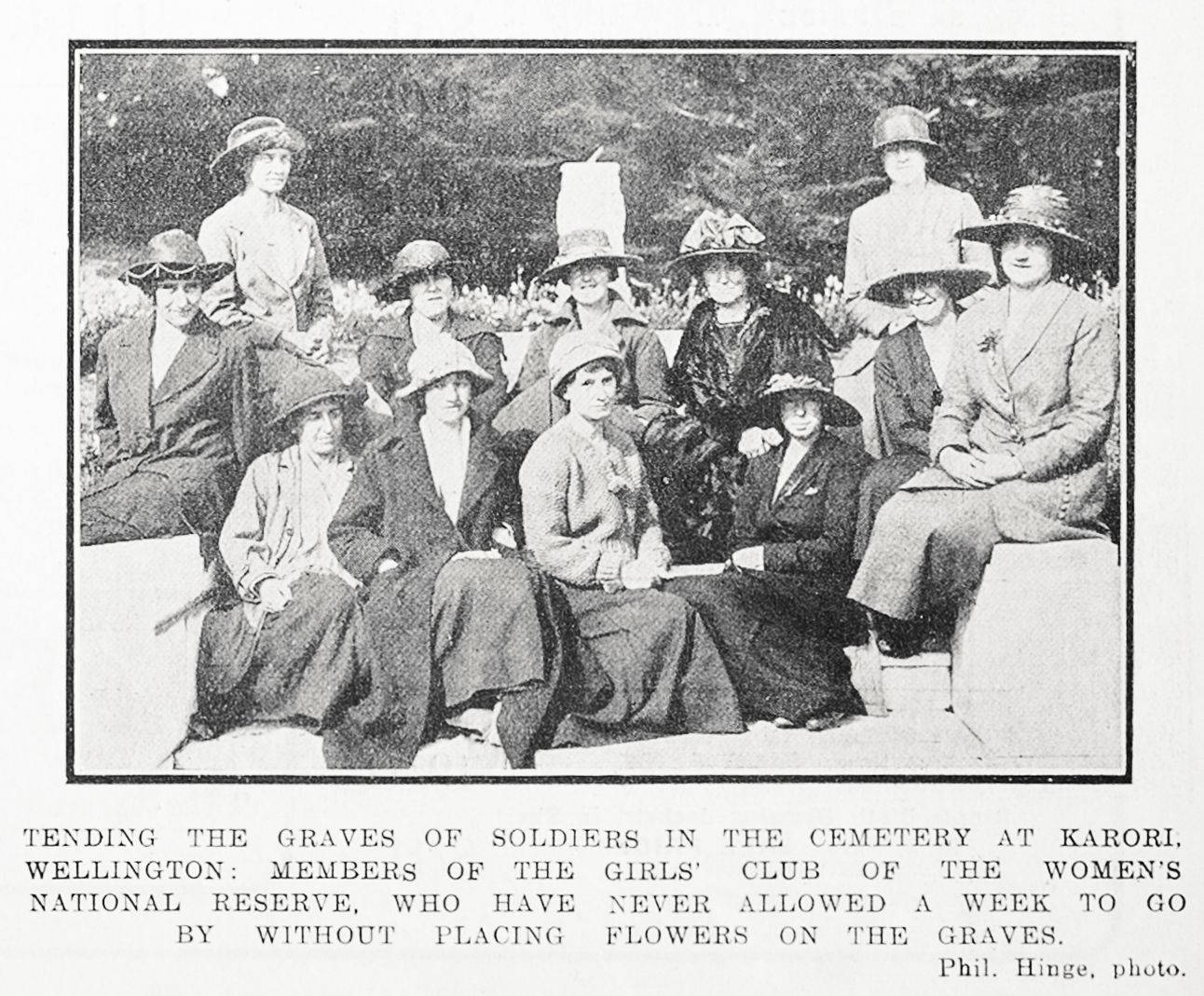To remember Armistice Day, we are sharing this photo of the Girls’ Club of the Women’s National Reserve, who as the caption describes, have not allowed a week to pass without placing flowers on the soldiers graves.
This photo was published in 1922 in the Auckland Weekly News.
It was in 1919 that the Girls’ Club first pledged to ensure that flowers were placed every Saturday on the graves at Karori in the newly formed Services Area. Donations of flowers were frequently requested.
‘It is the more creditable because all the girls are at work during the week, and to give up their Saturday half holiday must very often be real self-sacrifice. It is to be hoped that people with gardens will take note and that the girls will never lack the necessary flowers’.
In 1921, the flowers decorating the RSA hall for a ball, on the corner of Featherston and Brandon Streets, were gifted to the girls for use at the cemetery. Later the same year, they fundraised to purchase uniform green vases to attach to the graves as the wind was proving troublesome to keep the flowers on the graves.
In 1923 the club asked the public to help transport the wreaths left at the cenotaph out to Karori, explaining that if the girls took them by tram they would not be back in time for the afternoon service.
Winter made it hard to procure flowers and a 1926 newspaper article requested that those with anything spare in their gardens to leave flowers with a Karori tramway conductor who will leave them at the Karori depot.
Reports of the Girls’ Club maintaining the graves weekly, and then at holidays, continued up until ANZAC Day 1930.
If you want to read more about the sundial pictured in the background, please visit the story of Mathew & Elsie Holmes on our website:

Members of the Girls’ Club of the Women’s National Reserve, who have never allowed a week to go by without placing flowers on the graves. Courtesy of Auckland Libraries Heritage Collections AWNS-19220504-41-06

